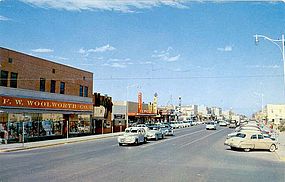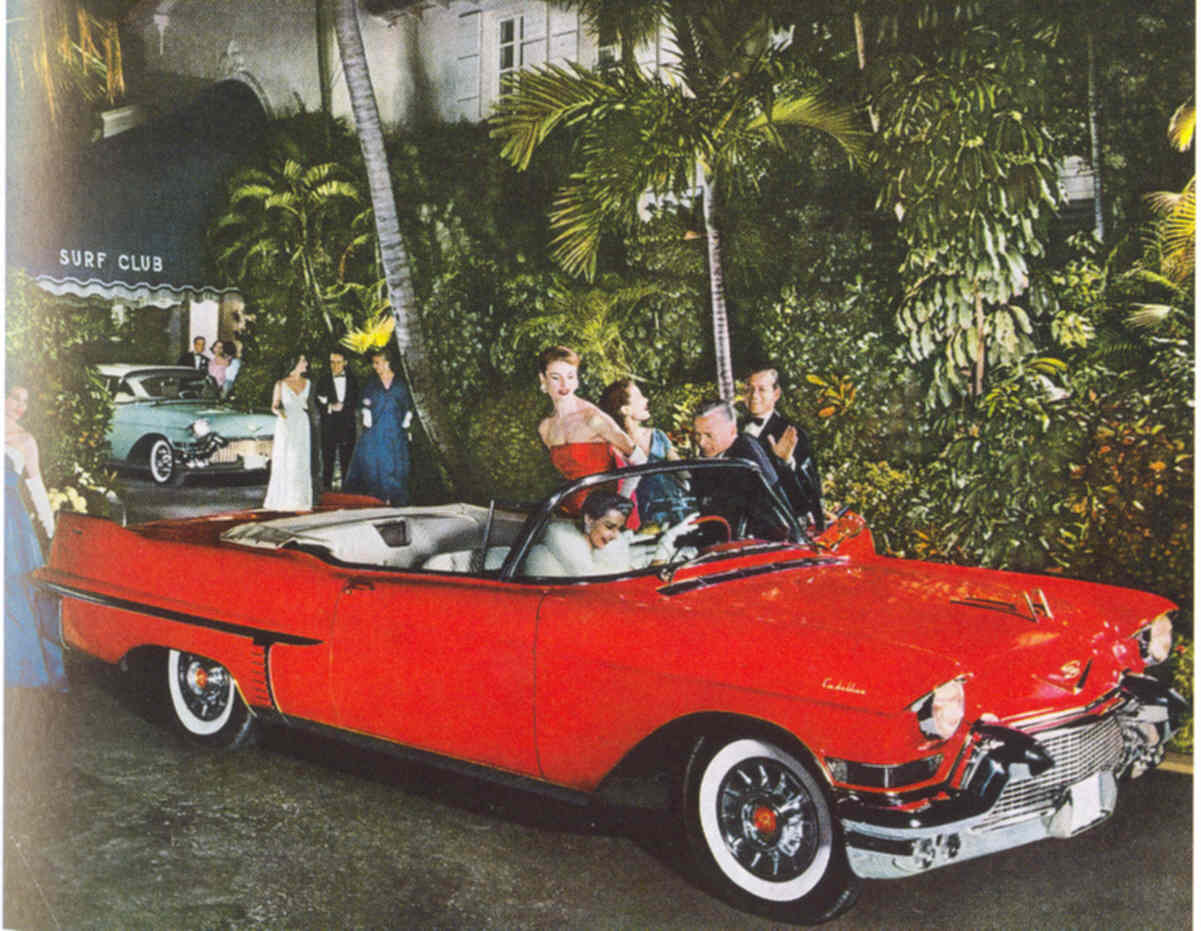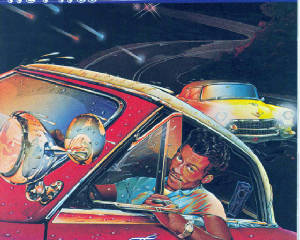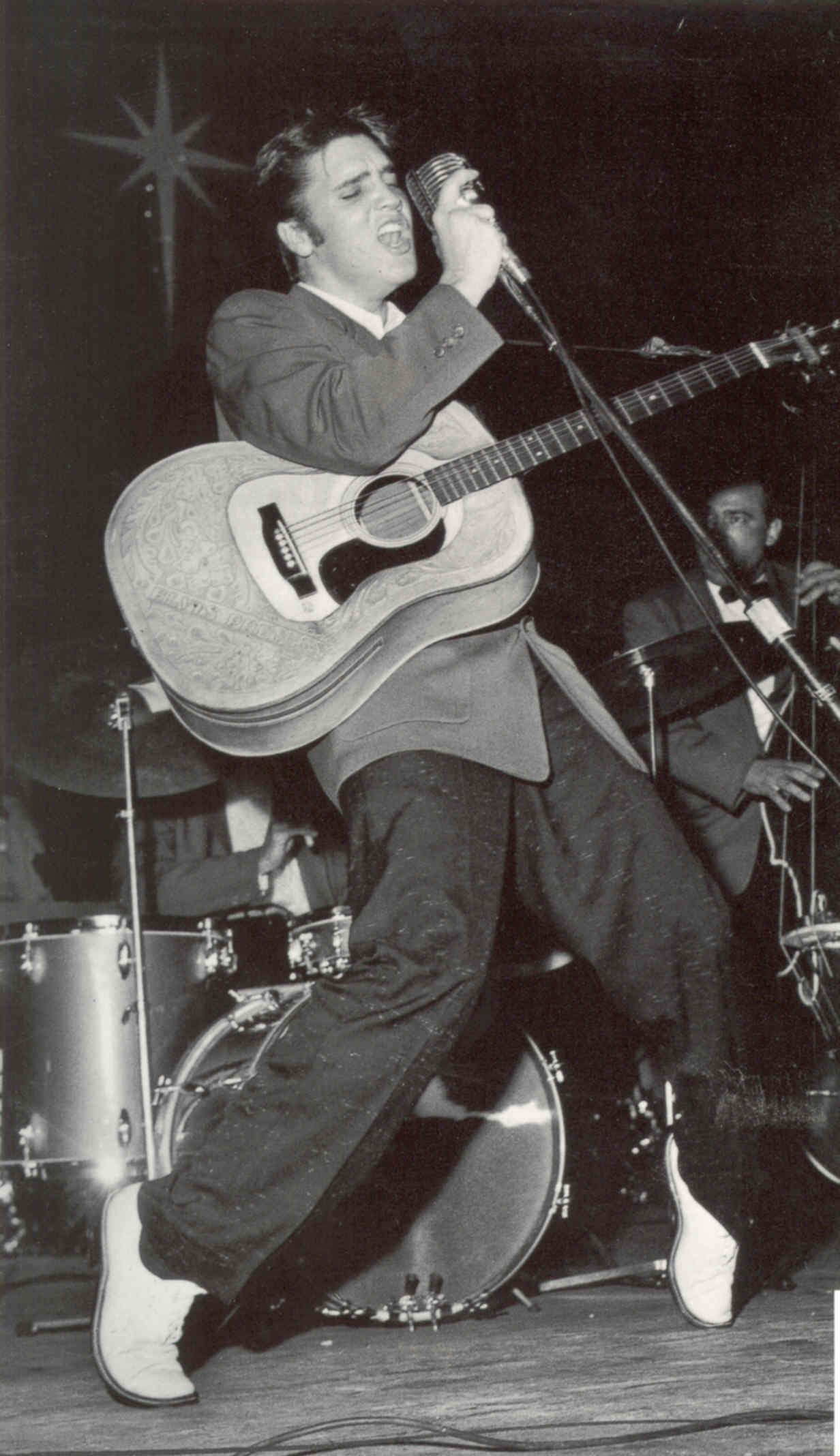|

|
| The early '50s, Grant, opposite the courthouse |
Anyone can sit down at a
computer, pull up Yahoo or Google, type in “earth lights,” hit enter, and then settle back and wonder at one of
the most fascinating scenes ever put together.
Someone has created a picture with the earth all spread out on one plane, displaying the earth at night,
with all of man’s electrical magic shining, revealing his presence worldwide.
And if you have ever spent time in the area we call West Texas, you will be struck by the scarcity of lights in the
area a West Texan would call his back yard. Looking at the fairly remote space
we call the Permian Basin and then looking west into the Big Bend area, then on up toward El Paso, one thinks of words like
isolated, sparse, and empty. And then another word comes to mind: unique, because
much of the area lacks population compared to other parts of the world where commerce thrives.
But commerce is the reason
folks are there—namely, oil commerce. Oh, there was an economy there before
the 1920’s when the oil drilling started, but it consisted only of lonely ranches and some overly optimistic farmers. There was no surface water to attract and support a population, but when oil was found,
so was water to support growth, and then the people came, attracted by the oil industry.
The oil towns
grew, and it was a frontier time, just like the gold rush was in California or Alaska. Those who came to work the oil fields
had been farmers and ranchers on the stubborn, thinly populated land nearby. Many
of them had a twang in their speech, because most of them were of Scottish descent. At different times in the 1800's, a Scottish
migration to the USA had taken place, with many of the migrants coming to Texas to claim free or inexpensive land.
Unbeknownst to
the early settlers, much of that land had oil under the surface, and oil soon became the lifeblood for transportation and
energy needs. The exploration for it, the production of it, and the delivery
of it grew into a culture in west Texas. Consequently, in the 1940's there were boomtowns and boom fields here and there all
over Texas. The Permian Basin, with its vast oil resources, provided way more
than its share of fuel for World War II and for that war’s tremendous thirst for gasoline. As a result of oil production during those years, the Odessa area secured its spot on the map for good.
For the most part, that was
our heritage.
The Scots and their descendants
and the mixed crowds that emerged over the years in west Texas hadn’t been there long when they were faced with two
earth-shaking events: A monstrous world-wide depression in the 1930’s, followed by a monstrous world war in the 1940’s.
These were the
primary factors that influenced our parents’ lives. The hard times of that
depression and the trauma of that war shaped their character, both good and bad. Volumes have been written about those days
and those people and how they met and survived those challenges, and they are now called our finest generation. Many of our
parents, if they were in military uniform, lived through days and nights with the real fear that tomorrow might not come. Wives wondered if they would be widows the next day, and many of them were. These were our parents. We were their kids, and we grew up
accepting their values, their views, their music, and most of all their dreams, which many of them would live vicariously
through us, though we may not have known it at the time. We were just the recipients
of fate, a fortunate fate. Our parents had been through prolonged hell and survived
it, and they found themselves in the rocking and rolling fifties in a boom economy in a booming area with children who were
becoming teenagers, and they wanted their kids to have the life and times that depression and war had stolen from them.
We were lucky kids to be
there in that place, at that time, with that prosperity, in a time when there was no drug culture to fight, no riots, no fixation
with full time crime and terror stories being blasted over cable TV channels.
We were proud of America’s role in world politics, and the stubborn segregation of the races was beginning its
slow fade. We did have the Korean War, a quick one, and the Cold War with Russia;
but it was a slow one with more fear than blood, and all that it demanded was that we endure the specter of atomic war. But
frankly, that was distant for most of our decade. Oh, there were hot flashes
historically, but really it was a good time throughout most of the fifties. And
I think the area in and around Odessa, Texas, was rather unique, in part due to its isolation.
The city was small enough to be totally transparent to almost everyone.
There
was oil wealth that was so new and growing in such abundance as to be of almost a Hollywood magnitude. It seemed that monetary success was a tangible goal for nearly everyone, or at least we were led to believe
that way, because we were watching it right under our eyes every day. All it
took was to believe and give things our best shot, and for many it seemed just that simple.
Determination and persistence were traits no doubt bequeathed to us by the Scots’ long struggle for independence.
In reality, the biggest factor
in that decade for us and our parents was the fact that there were jobs in Odessa and the surrounding area. Jobs meant growth; growth fostered optimism, and optimism brought the subliminal belief that it was all
going to go on forever. For some it would, but for most, it was just another
temporary time that eventually faded into something else. All that booms will
eventually bust, but the good times ruled in the fifties, and they are worth remembering and preserving in print.
My older son, a lover of
cars, once asked me about my experience with the cars in the fifties, and I responded by telling him I thought it was somewhat
magical with those cars, that music, the neat ladies, and all the abundance, the optimism, and so on. He thought for a minute about my answer and then he said, “Boy, I wish I could have been there!” He graduated from high school 31 years after his dad, and envies our life in the fifties. I think that says a lot.
The city of Odessa had the Odessa Country Club in the 1950s and before. I doubt there was a symbol
anywhere in that area that signified success more than the country club. If you
were successful, or if you wanted to be successful, or if you wanted to look successful, or act successful, you had to be
a member of that country club, or so it seemed. You had to be seen there, you
had to eat there; you had to send your kids there with their friends for their parties and their dates. If you were from a family that did not have the means to be a member of the Odessa Country club, then as
a teen you needed some combination of good looks, desirable personality, intelligence, athletic skill, friend connections,
or whatever to get into the country club and mingle with the successful people.

|
| "It is good to be king" |
There were a lot of people
whose families lacked the means to be a member of something so exclusive as a country club. The social ranks were open to
the less than wealthy, but it seemed to me that you had to qualify in some way or you would never sip pink lemonade from a
tall frosty glass, the drink that was the teen favorite. It was a symbol of the
ultimate teen-age social event: being a part of the adult show of success, and being among those in the IN CROWD. Without
some qualification you would never wear a white dinner jacket and hold the hand of your girl friend in her formal attire and
dance to the music of Roy Orbison or whoever else might be playing there. You
and your date would never be able to sit poolside in the summer nights while the soft desert breeze made it all perfect, like
an enchanting Hollywood scene.
Those were the
experiences many ambitious parents wanted for their success-infected teens, and for our generation it started when we were
twelve and went on until we were no longer in Odessa. It was a rite of passage
for someone in the right circles. Some people never had that experience until
they were adults, and some never would, and some wouldn’t give a damn, ever. And
saying that just means that there were different strokes for different folks, but evident in Odessa in the fifties amidst
the budding prosperity was the attitude that anything was possible, and that was a part of all of our lives. It probably made us ethnocentric in the views of others, but it didn’t matter much because it provided
a spunk that was not all bad.
In the ‘50s there were
crowds in every school. There was the football crowd. There was the duck-tail crowd (the Fonzie types who characterize the era somewhat in the media). There was the school band crowd, and then there were those who seemed not to fit too much anywhere, the
loners themselves, who were almost a crowd. There was the car crowd, the hot-rod
lovers. There was the IN crowd that included some of all of those in some form
or fashion, even some of loners. Many of these groups had existed together since the early years of grade school and had gradually
expanded as their members grew older. Most of the guys knew each other from sports
and were friends regardless of economic standing. And most of the girls from
the IN CROWD had been classmates off and on throughout their childhoods.
I would like
to say there was the brain crowd, but the very bright were fluid and moved in and out of several crowds. They were visible and respected. Also, to be a gifted athlete
in Odessa Texas was a fortunate thing for a kid. Social acceptance was almost
guaranteed for an athlete, because Odessa was a sports town, or at least a football town.
And good looks were almost a guarantee, but not all the time. There were
many handsome boys and beautiful girls that for one reason or the other never made it to the Odessa Country Club and other
similar venues. It just happened that way and for a multitude of reasons.
Then there were
those with wealth, good looks, intelligence, personality, etc. that would seemingly be the epitome of all that was enviable. Odessa definitely had those folks in the ‘50s.
There was a level where only a few could compete, and it was rarified. And
it came from oil wealth.
In the ‘50s, Grant
Street, the main street in Odessa, was a fully matured main street. It ran then,
as it does now, from south to north. The bisection created by the railroad tracks
between Second Street and First Street was a social barrier not often trespassed. At
this point in time, I think it rather amazing how segregated the two ends of town were.
The south and north sides of town were like two different towns altogether, one prosperous and the other not so prosperous. I truly believe the south side has its own book waiting to be written. The north side of the tracks included the main downtown area with the nucleus of activity centered at the
Ector County Courthouse, which is still there today. The downtown of the ‘50s
was busy with a drastically different look from the Odessa of today with its malls and shopping centers.
Now missing
are restaurants like the Club Café directly across from the courthouse, multiple movie theaters, department stores with names
like Penney’s, Dunlap’s, Woolworth’s, Wacker’s and so on. Closer
to the train tracks were the infamous pool halls, busy with the clicking of snooker and pool balls and the shuffling of dominos
and the chatter and guffawing all that produced, plus the inevitable fog of cigarette smoke and the smell of stale spilled
beer that permeated all other sensory experiences. That scene and environment drew all levels of male citizens. Also now missing,
but prevalent in the ‘50s, were several of the most interesting shops anywhere, including pawn shops with display windows
full of guns, knives, jewelry, World
War II items; you name it;
it could be found in those windows. The pawnshops of today pale in comparison.
Adults, kids and teens loved to prowl those sidewalks and window-shop, because, after all, television was not a major
factor in those days.
There were no
TV channels at all in the earlier years of that decade. Eventually there were
two channels, but they were pretty dull compared to what could be seen on the streets in the way of merchandising in the windows,
and best yet, car and people watching. Not everyone had a television set in their
house for much of that decade, and that was not all bad. Street shopping was a way of life.
Our Odessa of the ‘50s had an active downtown area, reminiscent of earlier times, like the old days, for sure.
Parades on Grant street were
a big draw, and every holiday would produce one, plus any other event the citizenry wanted to advertise would often be featured
in some downtown parade with people sitting atop buildings and cars, and babies on the shoulders of parents watching school
bands, oilfield equipment, the latest cars, cutest girls, homecoming queens, beauty queens, horses and their manure, you name
it, it was there passing by in front of wide eyes.
The major things in life
to a pre-teen, a teen, and to those just beyond their teens were the hangout drive-in restaurants. They played a huge role in the socialization of young people of that decade. It was at the drive-ins where sociability of young people had its roots, and each drive-in for the
most part had its own crowd and personality, and even its own purpose.
One of the most memorable
was on the east side of West County road, near the county park. Green’s catered to the car crowd. Its life was ended
prematurely by a total fire, but at the time it looked new, and it looked like fresh growth, and oh, the car thing was emerging
there. The customization of Detroit’s best could be seen there.
Of utmost importance was
a new music that could be heard coming from loudspeakers hooked to a Wurlitzer jukebox on the inside of the drive-in. Each song could be played for an Indian nickel, or the equivalent thereof. The
new music was called several things: rock-a-billy, rock and roll, or whatever,
and it evolved from the Black man’s culture. It would become iconoclastic
in its nature, playing more than 50 years later; it has become an important part of each generation of kids ever since
Speaking of rock and roll, Elvis Presley himself had three concerts in the Odessa High School gym in 1954-55, before
his nationwide popularity blossomed. I remember my friend Roger Rankin telling
about a night as a fifth grader (pre 1955) hearing a strange sound coming from a few blocks away. He sneaked out of his front yard off West 10th Street and walked to the old auditorium in West
County Park, where the joint was jumping and jiving. Too young and too broke
to get in the door, he risked a peek inside anyway, and there on the stage was Chuck Berry doing his wild thing. And of course, Roy Orbison and his Teen Kings became famous first in Odessa, where he spent his youthful
years performing in front of our age group. And one day I walked out of my home on Windsor Drive and saw someone who
looked vaguely familiar at the home of Cathy and Carl Bunch across the street.
See interview with Carl Bunch about Buddy, Roy and Elvis at
I was in too much of a hurry to stop and wonder about who I saw, but I later found out I could have met Buddy Holly in
person.
At the beginning of the decade, there were several elementary schools, but only two junior highs and a single high school.
Ten years later, there were three high schools and three junior high schools, with more on the way. The students on
both sides of town all seemed to know each other, and the rivalries were friendly. The harsh division that was spawned
by fierce athletic competition would come later, in the '60s. In the meantime, the neighbors were mostly friendly and
part of one big group, or so it seemed.
 

The biggest social event of all for the entire community was the game of football and the presentation thereof. There
were football heroes, football cheerleaders, football followers, and bands to support them. There were also those who
hated football, but they kept quiet. Football was big then, and today that fact has not changed.
After football, there was yet another fierce pastime, much more enjoyable, much more pleasurable, much more educational,
and every bit as heartbreaking and heart making and competitive: the pursuit of the opposite sex.
Odessa in the '50s provided an excellent environment for the enjoyment of that pastime, and frankly, those years might
have been one of the most unique times in history for that.
|

